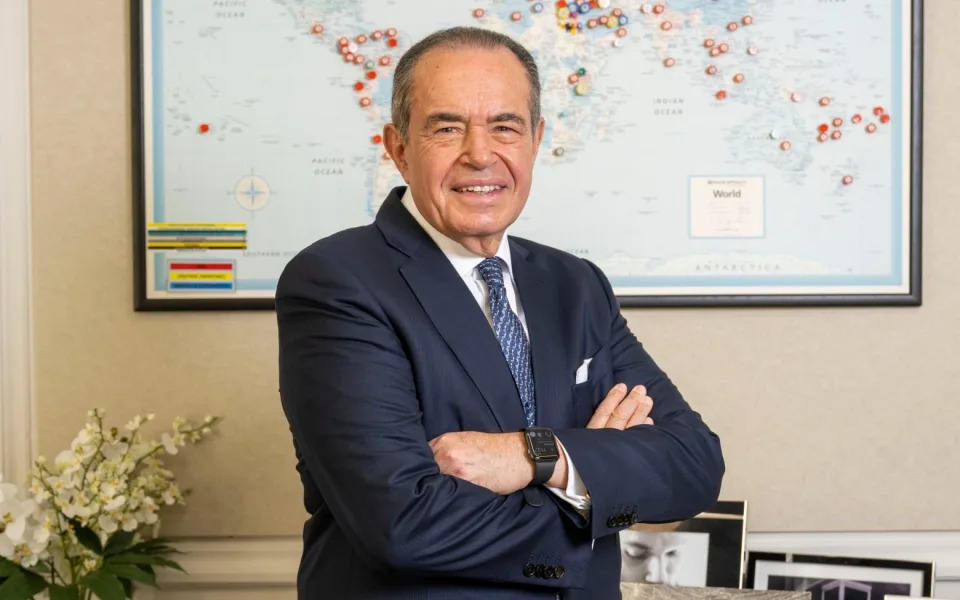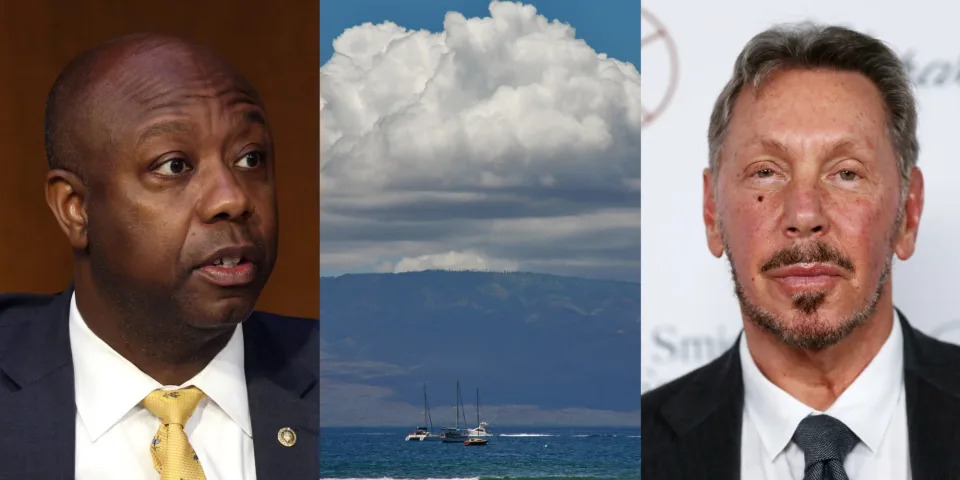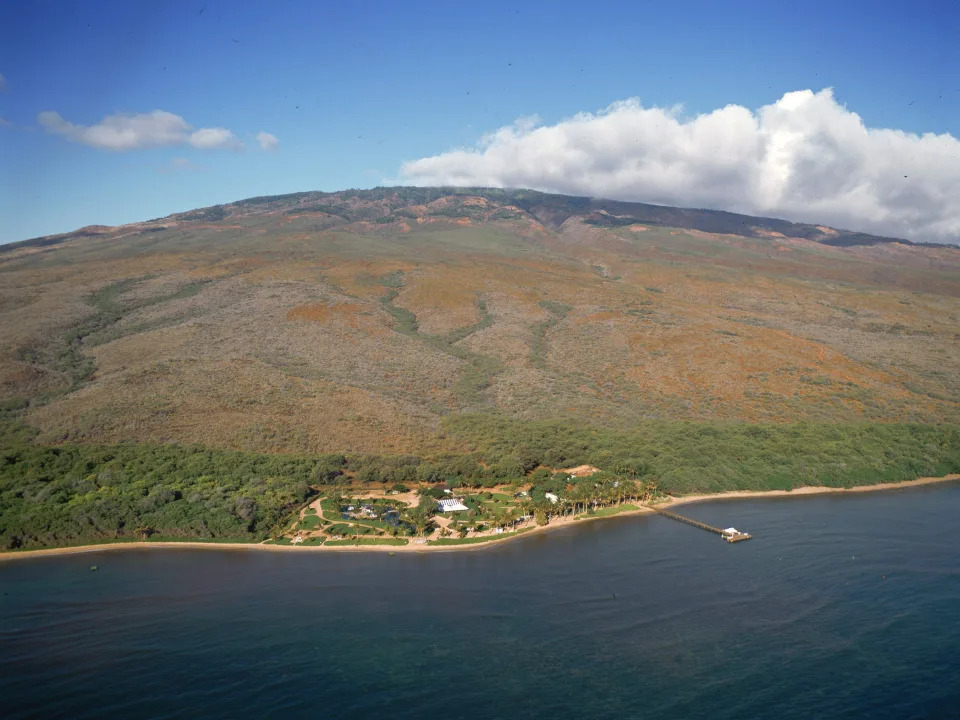Charles Hymas
Sun, May 21, 2023

Mohamed Mansour Man Capital Egypt businessman Conservative Party largest donation funding politics - Paul Grover for The Telegraph
The Tories have received their largest donation for more than 20 years from a businessman who said he believes that Rishi Sunak can grow the economy.
Mohamed Mansour, an Egyptian-born billionaire, has given £5 million to the Conservative Party, equal to the donation by Sir Paul Getty in 2001.
This reversed a dip in donations to the Tories after Boris Johnson’s exit, and followed the defection to Labour of former Conservative donors, such as Gareth Quarry, a recruitment millionaire who accused the Tories of being “riven with arrogance and complacency”.
Figures released by the Electoral Commission last December revealed that Tory donations between July and September were overtaken by Labour for the first time in more than a year – £3 million to the opposition’s £5.4 million.
Writing for The Telegraph, below, Mr Mansour said that Mr Sunak had shown himself to be “very capable”, citing him as “one who understands how growth is generated in the modern economy”.
“He gets the importance of technology and innovation. He can make the modern economy work for all UK citizens,” he said.
Mr Mansour recalled how his “life changed overnight” when Gamel Abdel Nasser, the former Egyptian president, seized his family’s land, homes and assets because he did not believe property rights should stand in the way of his socialist creed.
He was already at university in the US which meant, without his family’s support, he had to trade in his car, work as a waiter and “go hungry” as he struggled to pay for food and utilities.
“This experience left me with a lifelong belief in the importance of political stability, property rights and the rule of law,” he said.
This, he added, was why he chose to come to the UK, as “a place where the rule of law is paramount, property rights are respected and with an enviable record of political stability”.
His £5 million is the second biggest individual donation after Lord Sainsbury of Turville gave £8 million to the Liberal Democrats in 2019.
Mr Mansour’s donation contributed to the Tories’ most successful first quarter of donations for five years. The figure is set to be confirmed by the Electoral Commission in early June.
Since 2016, he has given the Tories £600,000 through his firm Unatrac and last December, the Prime Minister announced he had been made one of the party’s senior fundraisers in the run-up to the next general election.
In February, Mr Mansour agreed to a multimillion-pound tax settlement following an investigation into Unatrac by HM Revenue and Customs. This was part of a wider review by the tax office into multiple companies’ so-called “Google tax diversion schemes”. It found no evidence of diverted tax or avoidance.
Last year, he was given a role on the Government’s advisory investment council, as founder of his family-owned investment firm Man Capital, which he established in London in 2010 after moving from Egypt.
Mr Mansour is also the chairman of the Mansour Group, the family conglomerate which employs 60,000 people.
With his two brothers, the company has built close ties as distributors for US companies including Caterpillar, Chevrolet and General Motors. Some of his other interests include Metro, Egypt’s largest supermarket chain, and McDonald’s franchises in his homeland.
Outside of business, he served as a transport minister from 2006 to 2009 under Hosni Mubarak, the late Egyptian president who quit office during the 2011 Arab Spring.
Mubarak was considered a military autocrat who ruled Egypt for 30 years, maintaining his grip on office through a crackdown on political opposition, routinely running for re-election unopposed and stifling free speech. He died in 2020.
Why I donated £5m to the Tories – and believe in Rishi Sunak
By Mohamed Mansour, the founder and chairman of Man Capital LLP
When I was a teenager, my family’s assets were confiscated by the state. Egypt’s president Gamel Abdel Nasser, under the influence of his Soviet mentors, nationalised the cotton industry, taking my father’s business from him.
But he did not stop there. Nasser was convinced that private property rights should not stand in the way of his socialist creed and took my family’s land, homes and other assets.
My life changed overnight. I was already at university in the United States. But from this moment on, my family could not support me. I had to trade in my car, knuckle down and work as a waiter to pay my way through college. I came to know what it is like to go hungry and to struggle to pay for food and utilities. Back in Egypt, my father was left trying to support the family on a meagre salary.
This experience left me with a lifelong belief in the importance of political stability, property rights and the rule of law.
My father was not a man to be knocked down. He set up a cotton business in Sudan, only for that to be nationalised too.
But undeterred, when Anwar Sadat came to office, he returned to Egypt and began the job of rebuilding the family business. I was honoured to continue that work with my brothers.
We diversified the business away from commodities and started to work with firms such as General Motors and Caterpillar. Today, our family business employs 60,000 people around the world.
With that success came responsibility. I created a not-for-profit to offer financial support to businesswomen in Egypt, and we have given more than four million loans. In 2005, I stepped back from my business to serve in the Egyptian government and spent nearly four years trying to modernise the country’s transport infrastructure.
But when I had finished that period of service, I knew there was one country where I wanted to base my business. A place where the rule of law is paramount, property rights are respected and with an enviable record of political stability. This country: the United Kingdom.
I believe that this country has a very capable Prime Minister. One who understands how growth is generated in the modern economy. He gets the importance of technology and innovation. He can make the modern economy work for all UK citizens.
My confidence in the Prime Minister is why I was proud to become a senior treasurer of the Conservative Party last December. I want to give him the best chance of having a full five-year term and so have donated £5 million to the party’s election fighting fund. I look at what he has achieved in his first months in office and think what he could do in five years.
I love and respect this country, which has welcomed my family and me so warmly. It has a proud history and noble traditions. I believe that it has great days ahead of it. I want to do what I can to help this country – the place where I am watching my grandchildren grow up – achieve its great potential.
Former minister under ex-Egyptian president Hosni Mubarak donates £5m to Tory war chest
Sky News
Mon, May 22, 2023

An ex-minister to former Egyptian president Hosni Mubarak has donated £5m to the Conservatives to help them fight the next election.
Mohamed Mansour, who served as transport minister under the late Mubarak - who was deposed during a popular revolution - became the party's treasurer last December.
Mr Mansour said he had donated the amount - reported by the Daily Telegraph as the largest the Tories have received for more than 20 years - because of his "confidence" in Rishi Sunak.
Writing in the Telegraph, Mr Mansour said: "I believe that this country has a very capable prime minister. One who understands how growth is generated in the modern economy. He gets the importance of technology and innovation. He can make the modern economy work for all UK citizens.
"My confidence in the prime minister is why I was proud to become a senior treasurer of the Conservative Party last December.
Braverman facing questions in Commons - politics latest
"I want to give him the best chance of having a full five-year term and so have donated £5m to the party's election fighting fund. I look at what he has achieved in his first months in office and think what he could do in five years."
Sky News' Westminster Accounts project, in conjunction with Tortoise Media, collated all the information on donations that is available through Parliament's register of interest for the first time in one database, with total sums and details of which MPs are receiving how much money and from whom.
It revealed that Mr Sunak received the highest number of donations of any Conservative MP with £546,043 - but he came behind Labour leader Sir Keir Starmer, who amassed £752,809 given to him by 67 companies and individuals.
This latest donation to Mr Sunak will not show up on the Electoral Commission's register until next month, meaning it won't yet be available on the Westminster Accounts tool.
The development will be a welcome boost for Mr Sunak, who presided over a punishing set of local elections that saw the Tories lose more than 1,000 seats.
Despite the result, Mr Sunak confidently backed himself to remain prime minister for another term in an interview with Sky political editor Beth Rigby from the G7 summit in Japan.
Asked whether he would still be PM after the next general election, Mr Sunak replied: "Yes. I'm working really hard to deliver for the British people.
"That's my priority, that's what I am thinking about. I'm confident we can deliver for people. I know that things are tough right now, but I think we have made good progress in the six months that I've been in the job. I'll just keep at it."
According to Forbes, Mr Mansour oversees family conglomerate Mansour Group, which was founded by his father Loutfy in 1952 and has 60,000 employees.
Read more:
Westminster Accounts: Following the money
How to explore the database for yourself
Search for your MP using the Westminster Accounts tool
From 2006 to 2009, Mr Mansour served as Egypt's minister of transportation under Mubarak, who was topped in 2011 as Egypt was caught up in a wave of popular uprisings that became known as the Arab Spring.
Mubarak, known by his nickname as the modern-day "pharaoh", ruled Egypt as an autocrat for three decades from 1981, and was jailed for years after the revolution that ended his rule.
He was given a life sentence for the deaths of anti-government protesters at the heart of the uprising and was convicted in 2015 alongside his two sons, Alaa and Gamal, of embezzling millions of pounds from the state.
Mubarak eventually walked free in 2017 after being acquitted of the majority of the charges against him in a move that shocked Egyptians.
He died on 25 February 2020.




